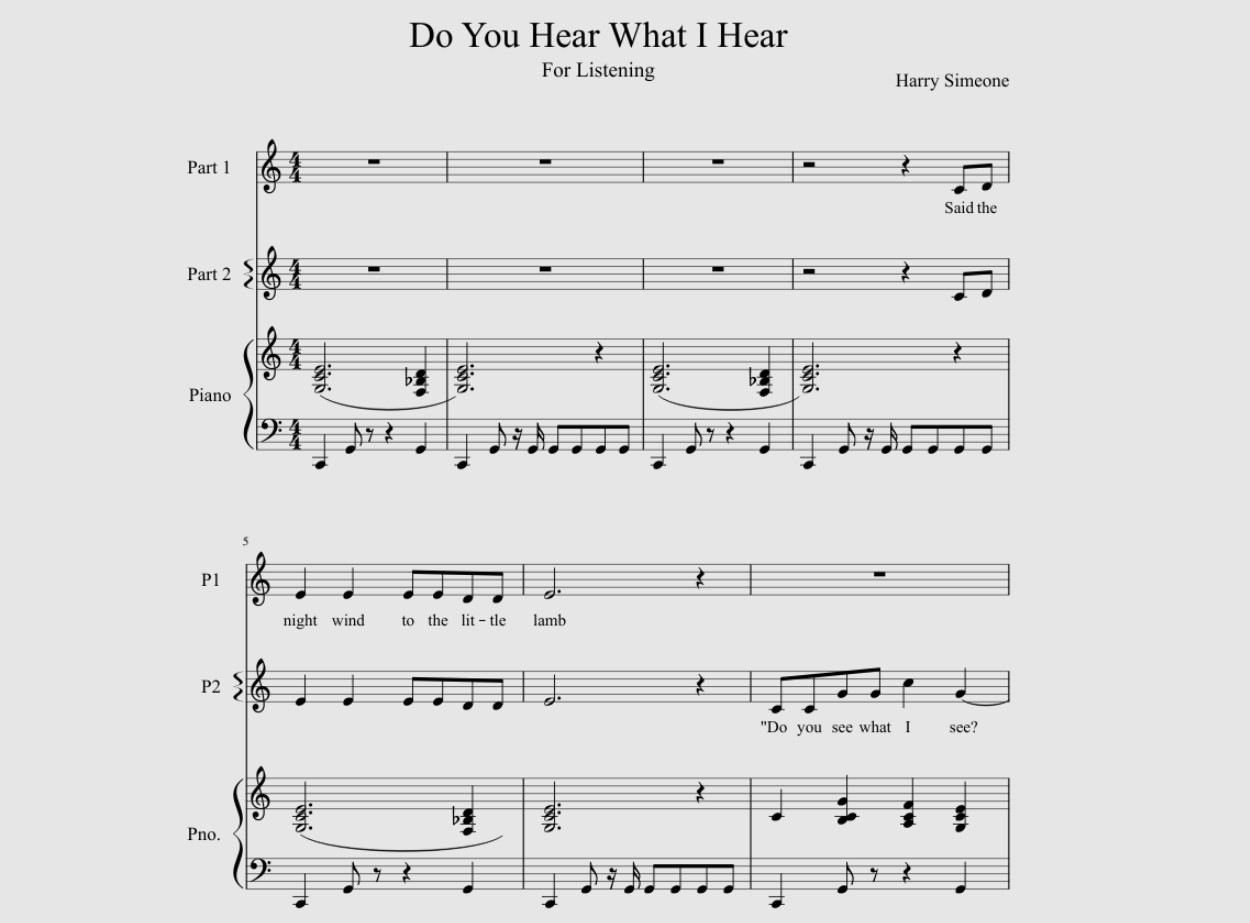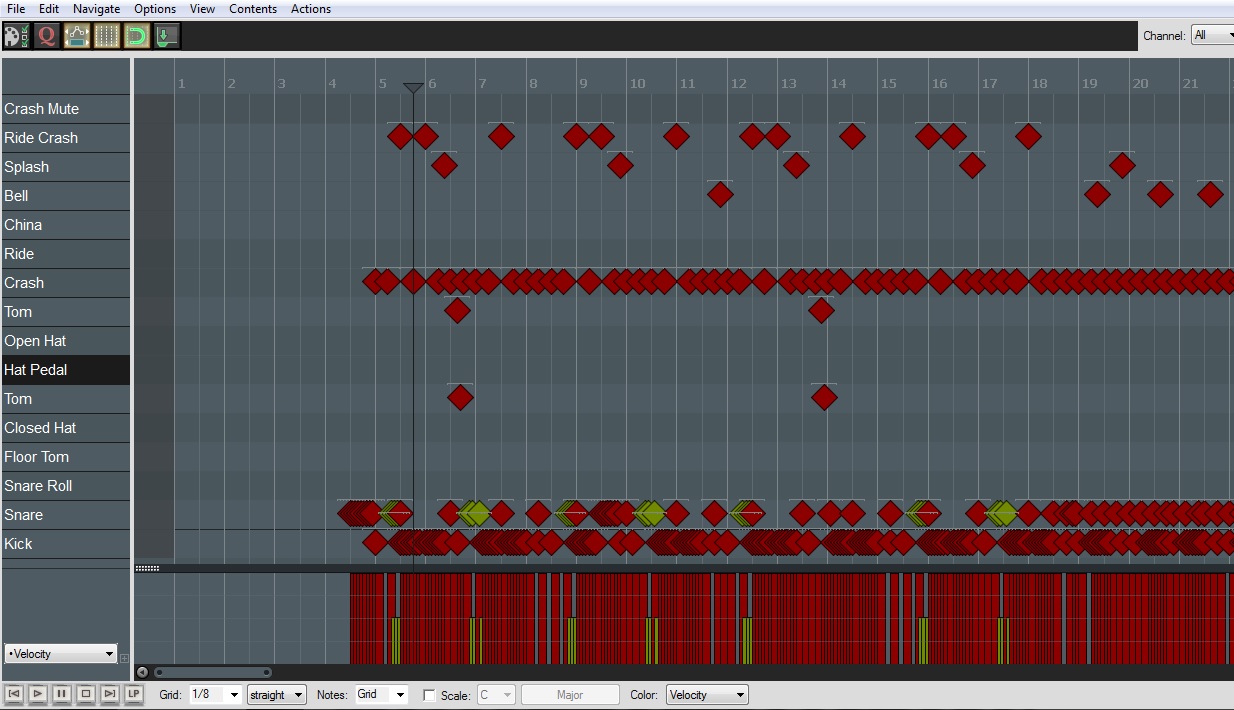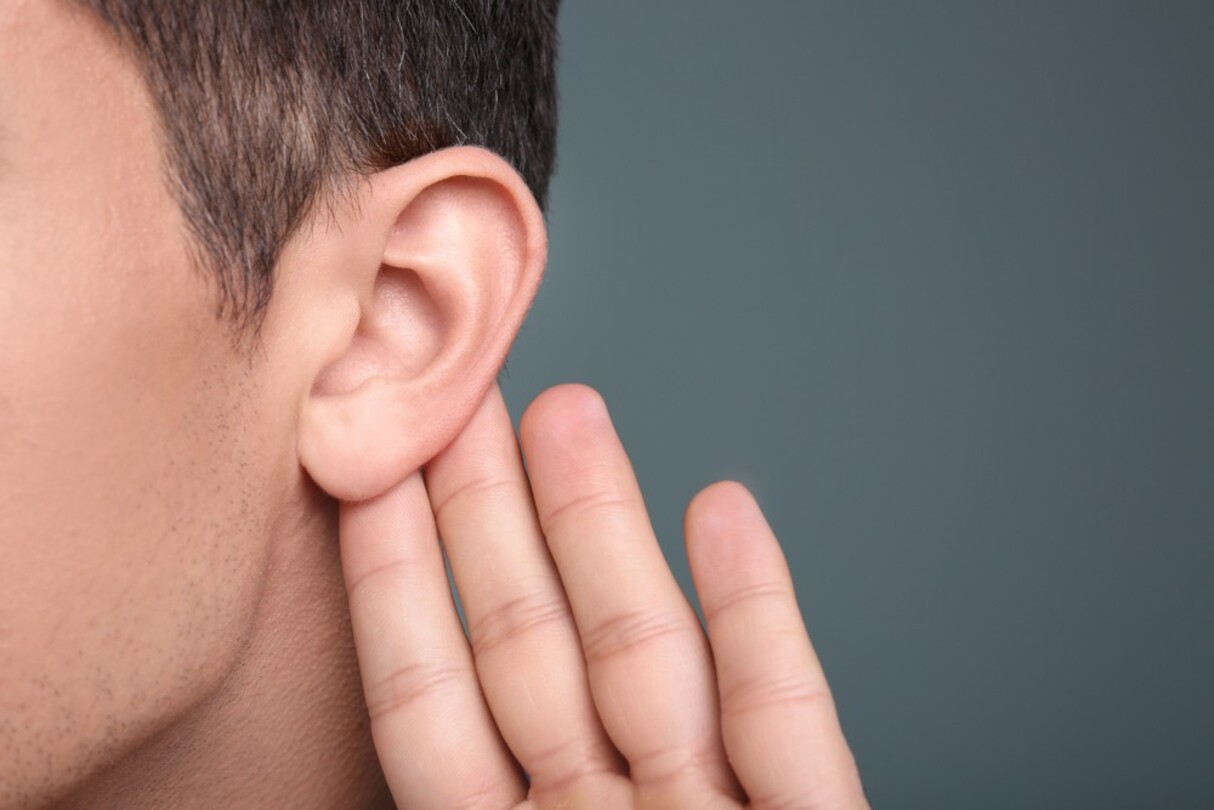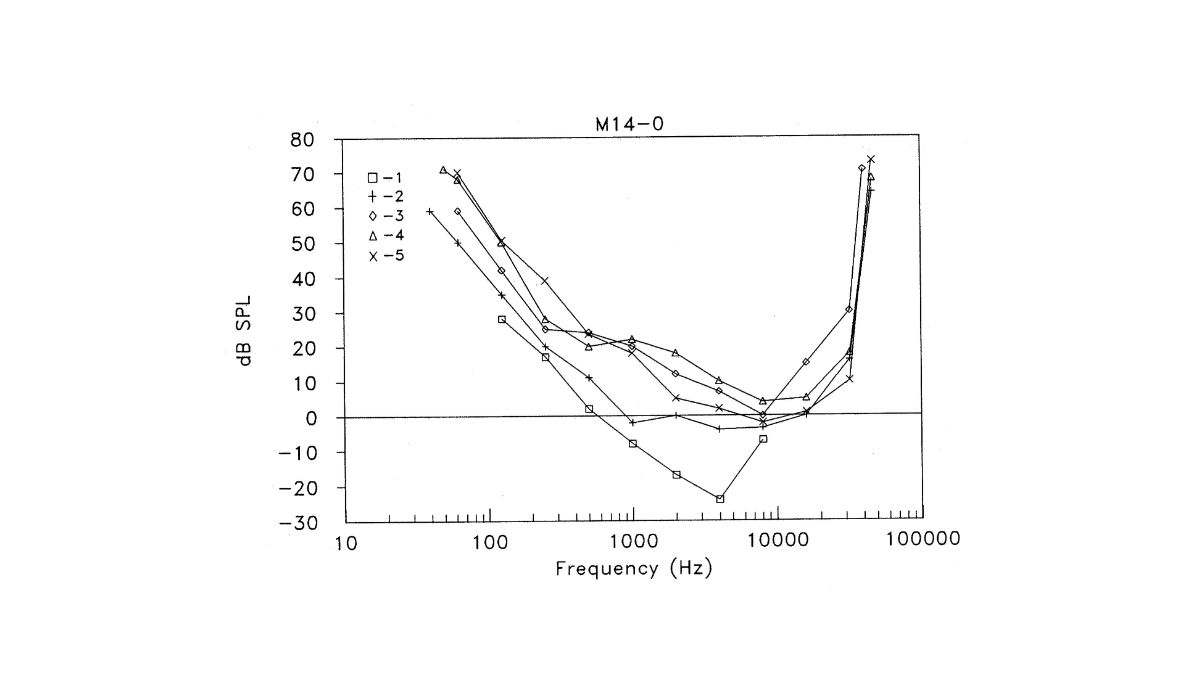Home>Instruments>Bass>How To Hear The Bass In A Song


Bass
How To Hear The Bass In A Song
Modified: January 22, 2024
Learn how to hear the bass in a song and understand its importance. Discover techniques to enhance your listening experience and appreciate the powerful presence of bass.
(Many of the links in this article redirect to a specific reviewed product. Your purchase of these products through affiliate links helps to generate commission for AudioLover.com, at no extra cost. Learn more)
Table of Contents
- Introduction
- Understanding the Role of Bass in Music
- Listening Techniques to Hear the Bass
- Adjusting Audio Settings to Enhance Bass
- Using Headphones or Earphones for Better Bass Perception
- Analyzing the Frequency Spectrum
- Focusing on Basslines and Bass Instruments
- Identifying Bass Patterns and Rhythms
- The Importance of a Good Sound System
- Conclusion
Introduction
Welcome to the world of bass! Whether you’re a music lover, aspiring musician, or an audio enthusiast, understanding and appreciating the bass is essential. The bass is more than just a low-frequency sound; it is the backbone of music that provides depth, rhythm, and groove to a song. However, for many listeners, the bass can sometimes be overshadowed by other elements in a song. In this article, we will explore various techniques to help you hear and appreciate the bass in a song.
Listening to bass is not only about enjoying the music on a deeper level but is also valuable for musicians and producers. By honing your ability to hear and analyze the bass, you can gain insights into the arrangement and structure of a song. This knowledge can greatly benefit the creative process, as well as help you appreciate the skill and artistry behind the performances.
Before we dive into the techniques, it’s important to note that the following methods will not magically give you the ability to hear every single bass note in a song. It requires practice, patience, and a trained ear. However, with consistent application of these techniques, you will begin to discern and appreciate the beauty of the bass.
In the next sections, we will discuss techniques such as adjusting audio settings, focusing on basslines, analyzing the frequency spectrum, and using headphones or earphones to enhance bass perception. We will also touch upon the importance of a good sound system to get the most out of your bass listening experience. So, let’s dive in and explore the wonderful world of bass!
Understanding the Role of Bass in Music
Before we delve into the techniques to hear the bass in a song, it is crucial to understand the fundamental role that the bass plays in music. The bass provides the foundation, the anchor, and the driving force that holds a song together.
At its core, the bass acts as the bridge between the rhythmic and harmonic elements of a song. It establishes the groove and pulse of the music, giving it a sense of movement and energy. The bass provides the low-end frequencies that add depth and richness to the overall sound.
One key aspect of the bass is its ability to define and outline the harmony of a song. It often plays the root notes of chords, providing a solid foundation for other instruments and vocals to build upon. By emphasizing certain notes within a chord progression, the bass can add tension, release, and emotional impact to a song.
Besides its harmonic role, the bass is also responsible for creating rhythmic patterns and grooves. It sets the pace and feel of a song, driving the beat and providing the foundation for other rhythmic elements. The bassline, a melodic line played by the bass, can be intricate and complex, adding melodic interest and movement to the music.
Additionally, the bass can also serve as a melodic instrument in its own right. Genres like funk, jazz, and fusion often feature bass solos and improvisation, showcasing the melodic capabilities of the instrument. The bass can evoke emotions, convey moods, and add a unique texture to a song.
Understanding the different roles of the bass in music is essential for training your ear to hear and appreciate its presence in a song. As you listen to music, pay attention to how the bass interacts with other instruments, how it drives the rhythm, and how it adds depth to the overall sound. By developing this awareness, you will be better equipped to isolate and focus on the bass in a song.
Listening Techniques to Hear the Bass
Now that you understand the important role of the bass in music, let’s explore some techniques to help you hear the bass more clearly in a song:
- Focus on the low-end frequencies: Start by training your ear to tune into the low frequencies. The bass typically occupies the lower end of the frequency spectrum, so try to pay attention to the deep, rumbling sounds in the music.
- Listen with quality speakers or headphones: Using speakers or headphones with a good bass response can make a significant difference in your ability to hear the bass. Look for models that provide a balanced frequency range and accurate bass reproduction.
- Adjust the EQ settings: Experiment with the equalizer settings on your audio device or music player. Increasing the bass frequencies and decreasing the treble can bring out the bass in a song. However, be careful not to overdo it, as it can result in a muddy or distorted sound.
- Pay attention to the rhythm section: The bass is closely intertwined with the drums and other percussion instruments. Train your ear to focus on the rhythmic interactions between the bass and the drums, as they work together to create the groove of the song.
- Listen for melodic patterns: The bass often plays melodic patterns or fills that add melodic interest to the music. Be attentive to these patterns and try to identify their recurring motifs or phrases.
- Isolate the bass frequencies: Use audio editing software or equalizer apps to isolate and boost the bass frequencies in a song. This can help you hear the bass more clearly by reducing the interference from other instruments.
Remember, these techniques require practice and active listening. As you train your ear and develop your listening skills, you will become more adept at recognizing and appreciating the bass in a song. Don’t get discouraged if it takes time—it’s a journey of discovery and enjoyment!
Adjusting Audio Settings to Enhance Bass
One effective way to improve your ability to hear the bass in a song is by adjusting your audio settings to enhance its prominence. Here are some tips to maximize the bass experience:
- Equalizer adjustments: Most audio devices and music players come with built-in equalizers that allow you to tweak the frequency response. Try boosting the low frequencies or engaging a preset like “Bass Boost” or “Deep Bass” to emphasize the bass in the song. However, exercise caution to avoid distorting the overall sound.
- Bass-boosting headphones or speakers: Investing in high-quality headphones or speakers designed to amplify bass frequencies can significantly enhance your bass listening experience. Look for models that have built-in subwoofers or enhanced bass drivers to deliver a more powerful and pronounced low-end.
- Subwoofers and sound systems: If you have a home audio setup, consider adding a dedicated subwoofer to your system. Subwoofers are designed to reproduce deep bass frequencies with accuracy and impact. They can transform the way you perceive bass in music, adding depth and richness to the sonic experience.
- Bass management settings: Some audio devices and sound systems have bass management settings that allow you to fine-tune the low-frequency output. Experiment with these settings to find the optimal balance between the bass and other frequencies, ensuring a well-rounded and powerful sound.
- Room acoustics: The environment in which you listen to music can greatly impact the bass perception. If your room has poor acoustics or unwanted resonances, it can affect the clarity and definition of the bass. Consider using acoustic treatments or position your speakers strategically to minimize these issues.
By implementing these audio adjustments, you can accentuate the bass frequencies and create a more immersive listening experience. However, remember to strike a balance and avoid sacrificing the overall audio quality by excessively boosting the bass. The goal is to enhance the bass presence without compromising the fidelity of the music.
Using Headphones or Earphones for Better Bass Perception
When it comes to hearing the bass in a song, the choice of headphones or earphones can make a significant difference. Here’s how you can leverage these devices to improve your bass perception:
Choose headphones or earphones with good bass response: Look for models that are known for delivering excellent bass reproduction. Closed-back headphones generally offer better bass isolation and impact, while in-ear monitors (IEMs) can provide a more immersive and intimate listening experience.
Consider headphones with built-in bass enhancement features: Some headphones come with bass-boosting technology or customizable sound profiles that allow you to tailor the bass response to your preference. These features can help you emphasize the bass frequencies and fine-tune the overall sound signature.
Experiment with different earphone tips: If you use earphones or IEMs, try different ear tips to find a comfortable and secure fit. The right fit can improve bass clarity and isolation, as it ensures a proper seal that prevents sound leakage and boosts bass impact.
Try using a headphone amplifier: In some cases, a headphone amplifier can amplify the power and impact of the bass frequencies, resulting in a more dynamic and immersive bass experience. This is particularly beneficial for high-impedance headphones or when your audio source lacks sufficient power output.
Adjust the position and seal: Proper placement and a secure seal are crucial for optimal bass perception. Ensure that the headphones or earphones are positioned correctly over your ears or in your ear canals. Achieving a good seal helps to block out external noise and allows you to focus on the bass frequencies.
Utilize sound enhancement apps or equalizer settings: Many music apps and media players offer built-in equalizers or sound enhancement features. Experiment with different presets or manually adjust the bass frequencies to enhance the bass presence. However, be mindful of not overcompensating, as it can lead to an imbalanced or distorted sound.
Using headphones or earphones allows you to have a more intimate and detailed listening experience, enabling you to better perceive the nuances and subtleties in the bass frequencies. Take advantage of these devices to immerse yourself in the mesmerizing world of bass.
Analyzing the Frequency Spectrum
Understanding the frequency spectrum is indispensable when it comes to hearing and analyzing the bass in a song. The frequency spectrum refers to the range of frequencies present in audio, and being able to identify and isolate the bass frequencies is key. Here are some techniques to help you analyze the frequency spectrum:
- Use a spectrum analyzer: Spectrum analyzer tools, whether standalone software or plugins, provide a visual representation of the different frequencies in a song. They help you identify the dominant frequencies, including the bass frequencies. Pay close attention to the low-end range of the spectrum, where the bass typically resides.
- Focus on the fundamental frequency: The fundamental frequency is the primary pitch of a sound and is the lowest frequency component. In the case of bass, it is typically in the range of 40 Hz to 300 Hz. Training your ear to recognize the fundamental frequency of a song’s bassline can greatly enhance your ability to hear the bass.
- Listen for harmonic overtones: Harmonic overtones are multiples of the fundamental frequency that give the bass its distinct tonal characteristics. By honing your ability to identify these overtones, you can better perceive the intricacies and nuances in the bass frequencies.
- Compare the bass to other instruments: Use the frequency spectrum as a tool to compare the bass frequencies to other instruments in the mix. Understand how the bass interacts with the drums, guitars, keyboards, and vocals to create a cohesive sound. This comparative analysis can help you isolate and appreciate the different elements within a song.
- Train your ear with frequency exercises: Engage in frequency training exercises to improve your ability to recognize and differentiate between different frequencies. These exercises may include listening to pure sine waves at different frequencies or identifying the frequency range of specific instruments.
By actively analyzing the frequency spectrum, you can develop a more discerning ear for the bass frequencies in a song. This knowledge will enable you to appreciate the nuances in the bassline and recognize how it contributes to the overall musical composition.
Focusing on Basslines and Bass Instruments
One of the most effective ways to hear and appreciate the bass in a song is by focusing on the bassline and the bass instruments. The bassline refers to the melodic line played by the bass instrument, and it serves as a prominent feature of the music. Here are some techniques to help you focus on basslines and bass instruments:
- Listen for the rhythmic foundation: The bassline is responsible for establishing the rhythm and groove of the song. Pay attention to how the bass interacts with the drums and sets the rhythmic framework. By honing in on the rhythmic elements, you can better perceive the bassline’s role in driving the song forward.
- Identify the distinctive characteristics: Each bassline has its own unique qualities and patterns. Train your ear to recognize the specific characteristics of different basslines, such as their rhythmic complexity, melodic contour, or use of techniques like slides, slaps, or pops.
- Isolate the bass instrument: In certain songs, the bass instrument may share frequencies with other instruments, making it harder to distinguish the bassline. Use equalizers or audio editing software to temporarily mute or reduce the volume of other instruments, allowing the bass instrument to stand out.
- Follow the bass player’s performance: If possible, watch live performances or videos of bass players performing the song. Observing their technique and movements can provide valuable insights into how they interpret and execute the bassline.
- Study transcriptions or sheet music: Transcriptions or sheet music of songs can help you visualize and analyze the bassline more accurately. Following along with the notation can deepen your understanding of the bassline’s melodic patterns and rhythmic intricacies.
- Experiment with playing the bassline yourself: If you’re a musician, try playing along with the song’s bassline on your own instrument. This hands-on approach allows you to internalize the nuances of the bassline and gain a deeper appreciation for the technical skill required to perform it.
By focusing your attention on the bassline and the bass instruments, you can better appreciate the artistry and musicality behind the bass performance. Developing an understanding of the bassline’s role within the song will enable you to fully immerse yourself in the rhythmic and melodic intricacies of the music.
Identifying Bass Patterns and Rhythms
When it comes to hearing and appreciating the bass in a song, being able to identify and analyze the bass patterns and rhythms is essential. The bass plays a pivotal role in establishing the groove and rhythm of a song. Here are some techniques to help you identify and appreciate bass patterns and rhythms:
- Listen for repetitive motifs: Pay attention to recurring bass motifs or rhythmic patterns throughout the song. These patterns can be simple or complex, but they provide a cohesive structure and foundation for the music.
- Analyze syncopation: Syncopation refers to the deliberate placement of bass notes off the main beats. It adds a rhythmic tension and groove to the music. Train your ear to recognize these syncopated rhythms in the bassline as it interacts with other instruments.
- Focus on rhythmic interplay: Observe how the bass interacts with the drums and other rhythm instruments. Listen for moments of synchronization, where the bassline and drum patterns align to create a tight and cohesive rhythm section.
- Identify different rhythmic styles: Different genres and musical styles often have distinctive bass playing techniques and rhythmic approaches. Listen to a variety of genres to familiarize yourself with different bass patterns, such as walking basslines in jazz, driving 8th notes in rock, or complex funk basslines.
- Pay attention to variations and fills: Bass players often incorporate variations and fills in their playing to add dynamics and interest. These variations can take the form of rhythmic embellishments, slides, ghost notes, or improvised phrases. Train your ear to pick up on these details within the bassline.
- Study bass transcriptions or tutorials: Transcriptions or tutorials of bass parts can serve as valuable resources for understanding the patterns and rhythms employed by different bass players. Follow along with these resources to gain a deeper insight into the intricacies of bass playing in specific songs.
By actively focusing on the bass patterns and rhythms, you can develop a keen ear for the groove and rhythmic foundation of a song. Not only will this allow you to appreciate the bass on a deeper level, but it will also enhance your overall understanding of the music’s structure and arrangement. Embrace the rhythmic complexities and patterns of the bassline, and you’ll discover a whole new layer of musical appreciation.
The Importance of a Good Sound System
When it comes to fully experiencing and appreciating the bass in a song, the quality of your sound system plays a crucial role. A good sound system can greatly enhance the clarity, depth, and impact of the bass frequencies. Here’s why a good sound system is important:
Accurate reproduction of bass frequencies: A well-designed sound system, whether it’s a set of speakers or headphones, is capable of accurately reproducing the full range of bass frequencies. It ensures that you can hear the nuances and details in the bassline without distortion or muddiness.
Better separation and imaging: A good sound system provides better separation and imaging of instruments, allowing you to hear the individual components of the music more clearly. This separation is crucial for discerning the bass from other instruments and appreciating its unique contribution to the overall mix.
Powerful bass response: A high-quality sound system typically has a robust bass response, whether it’s through dedicated subwoofers or well-engineered bass drivers. This power and impact in the low-end frequencies can truly immerse you in the music, making the bassline come alive with energy and depth.
Reduced distortion and improved fidelity: Cheap or low-quality sound systems can introduce distortion or coloration to the audio, leading to an inaccurate representation of the music. A good sound system, on the other hand, aims for faithful audio reproduction, ensuring that the bass and other frequencies are presented with clarity and precision.
Enhanced immersive experience: The bass frequencies are not just heard but felt. A good sound system, particularly one with powerful speakers or quality headphones with good bass extension, can create a more immersive experience by transmitting the physical impact of the bass vibrations.
Appreciation of production value: A high-fidelity sound system allows you to fully appreciate the production value of a song. You can discern the intricate mixing, mastering, and production techniques employed to sculpt the bass and create a cohesive sonic experience.
Investing in a good sound system, whether it’s for personal listening or professional use, is an investment in your ability to fully enjoy and understand the bass in music. It allows you to connect with the music on a deeper level and appreciate the artistry and technicality behind the bass performance.
Conclusion
Understanding and appreciating the bass in a song is a journey that requires active listening, training, and a keen ear. Through the techniques discussed in this article, such as focusing on basslines, analyzing the frequency spectrum, and adjusting audio settings, you can develop a deeper appreciation for the role of the bass in music.
By actively listening and engaging with the bass frequencies, you will begin to unlock a whole new dimension of the music. The bass provides the foundation, rhythm, and groove that drive a song, and by learning to hear and appreciate its presence, you gain a greater understanding of the intricacies and artistry within the music.
Remember, this is not an overnight process. It takes time and practice to train your ear to hear and analyze the bass. Be patient with yourself, and enjoy the journey of discovery as you explore new genres, listen to different bass players, and immerse yourself in the world of bass.
Lastly, don’t underestimate the importance of a good sound system or headphones. Investing in high-quality equipment can dramatically enhance your bass listening experience, allowing you to fully immerse yourself in the richness and power of the low-end frequencies.
So, put on your headphones, adjust your audio settings, and embark on this sonic adventure as you deepen your understanding and appreciation of the bass in music. Let the bassline guide you through the rhythms, melodies, and emotions of the songs, and enjoy the transformative power of the bass in every note, groove, and vibration.











